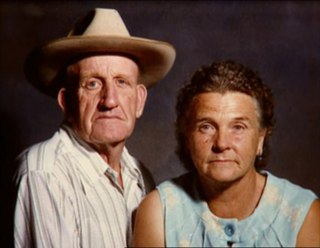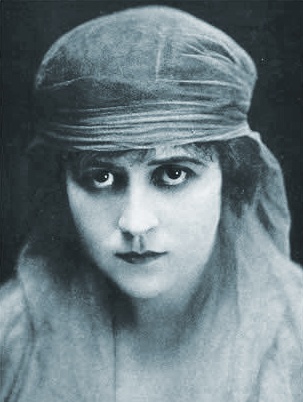
Gary Leon Ridgway, also known as the Green River Killer, is an American serial killer and sex offender. He was initially convicted of 48 separate murders. As part of his plea bargain, another conviction was added, bringing the total number of convictions to 49, making him the second most prolific serial killer in United States history according to confirmed murders. He killed many teenage girls and women in the U.S. state of Washington during the 1980s and 1990s.

San Quentin State Prison (SQ) is a California Department of Corrections and Rehabilitation state prison for men, located north of San Francisco in the unincorporated place of San Quentin in Marin County.

California Institution for Women (CIW) is a women's state prison located in the city of Chino, San Bernardino County, California, east of Los Angeles, although the mailing address states "Corona," which is in Riverside County, California.

Henry Lee Lucas was an American convicted serial killer. Lucas was convicted of murdering his mother in 1960 and two others in 1983. He rose to infamy while incarcerated for these crimes when he falsely confessed to approximately 600 other murders to Texas Rangers and other law enforcement officials. Many unsolved cases were closed based on the confessions and officially attributed the murders to Lucas, and he was considered the most prolific serial killer in history. Lucas was convicted of murdering 11 people and condemned to death for a single case with a then-unidentified victim, later identified as Debra Jackson. An investigation by the Dallas Times-Herald newspaper showed that many of the murders Lucas confessed to were flatly impossible for him to have committed. While the Rangers defended their work, a follow-up investigation by the Attorney General of Texas concluded Lucas was a fabulist who had falsely confessed. Lucas' death sentence was commuted to life in prison in 1998. Lucas himself later recanted everything as a hoax with the exception of his confession to murdering his mother. He died of congestive heart failure in 2001.

A Place in the Sun is a 1951 American drama film based on the 1925 novel An American Tragedy by Theodore Dreiser and the 1926 play, also titled An American Tragedy. It tells the story of a working-class young man who is entangled with two women: one who works in his wealthy uncle's factory, and the other a beautiful socialite. Another adaptation of the novel had been filmed once before, as An American Tragedy, in 1931. All these works were inspired by the real-life murder of Grace Brown by Chester Gillette in 1906, which resulted in Gillette's conviction and execution by electric chair in 1908.
The Wonderland murders, also known as the Four on the Floor Murders or the Laurel Canyon Murders, are four unsolved murders that occurred in Los Angeles, California, United States, on July 1, 1981. It is assumed that five people were targeted to be killed in the known drug house of the Wonderland Gang, three of whom—Ron Launius, William "Billy" Deverell, and Joy Miller—were present. Launius, Deverell, and Miller, along with the girlfriend of an accomplice, Barbara Richardson, died from extensive blunt-force trauma injuries. Only Launius' wife Susan survived the attack, allegedly masterminded by organized crime figure and nightclub owner Eddie Nash. Nash, his henchman Gregory Diles, and porn star John Holmes were at various times arrested, tried, and acquitted for their involvement in the murders.

Florence Lois Weber was an American silent film actress, screenwriter, producer and director. She is identified in some historical references as among "the most important and prolific film directors in the era of silent films". Film historian Anthony Slide has also asserted, "Along with D. W. Griffith, Weber was the American cinema's first genuine auteur, a filmmaker involved in all aspects of production and one who utilized the motion picture to put across her own ideas and philosophies".

Faye Della Copeland and Ray Copeland became, at the ages of 69 and 76 respectively, the oldest couple ever sentenced to death in the United States. They were convicted of killing five drifters at their farm in Mooresville, Missouri. When her sentence was commuted to life in prison in 1999, Faye Copeland was the oldest woman on death row.

Leah Baird was an American actress and screenwriter.

The Blot is a 1921 American silent drama film directed by Lois Weber, who also co-wrote and produced the film. The film tackles the social problem of genteel poverty, focusing on a struggling family. It stars Philip Hubbard, Margaret McWade, Claire Windsor, and Louis Calhern.

Douglas Daniel Clark is an American serial killer and necrophile. Clark and his accomplice, Carol Mary Bundy, were collectively known as the Sunset Strip Killers and were responsible for the deaths of at least seven individuals although they are considered suspects in the deaths of several other women and young girls. Clark was charged with six murders in Los Angeles, California and was convicted in 1983. Clark's victims were typically young prostitutes or teenage runaways and his victims were decapitated and their severed heads kept as mementos. He would also perform sex acts on their corpses.

Hop, the Devil's Brew is a 1916 American silent film directed by Lois Weber and Phillips Smalley. Inspired by an exposé of opium trafficking in the Saturday Evening Post, the semidocumentary film starred Smalley as a Customs official and Weber as his opium-addicted wife.
False Colors, also known as False Colours, is a surviving 1914 American silent drama film directed, written by and starring Lois Weber and her husband Phillips Smalley. Weber plays dual roles of a mother and her daughter.

What Do Men Want? is a 1921 American silent drama film written, produced, and directed by Lois Weber and starring her muse Claire Windsor. Surviving reels were released on DVD and Blu-ray in 2018.
How Men Propose is a 1913 American silent short comedy film, usually credited to Lois Weber and Phillips Smalley as directors and to Weber as writer and producer, although their definite authorship cannot be confirmed. The film has recently not been included in Weber's filmography by scholars, and the Library of Congress, while listing it as one of Weber's films notes that "the director is unknown, but may be Lois Weber." It was produced by the Crystal Film Company and distributed by the Universal Film Manufacturing Company.
Marion Orth was an American screenwriter of the silent and sound eras of Hollywood. She was a frequent collaborator of director Lois Weber.

Idle Wives is a 1916 American silent drama film co-directed by Lois Weber and Phillips Smalley. The film was released by Universal Film Manufacturing Company. Surviving reels of the film are preserved at the Library of Congress. The film was released on DVD/Blu-ray in 2018.

The Jew's Christmas was a 1913 silent film. The film was written by Lois Weber, and directed by Weber and her husband Phillips Smalley. The first American film to include a rabbi as a character, it was positively received, and novelized the year after its release. Modern analysts have described the film as encouraging Jewish assimilation and interfaith marriage in Judaism, and as incorporating prejudiced ideas about Jews.














